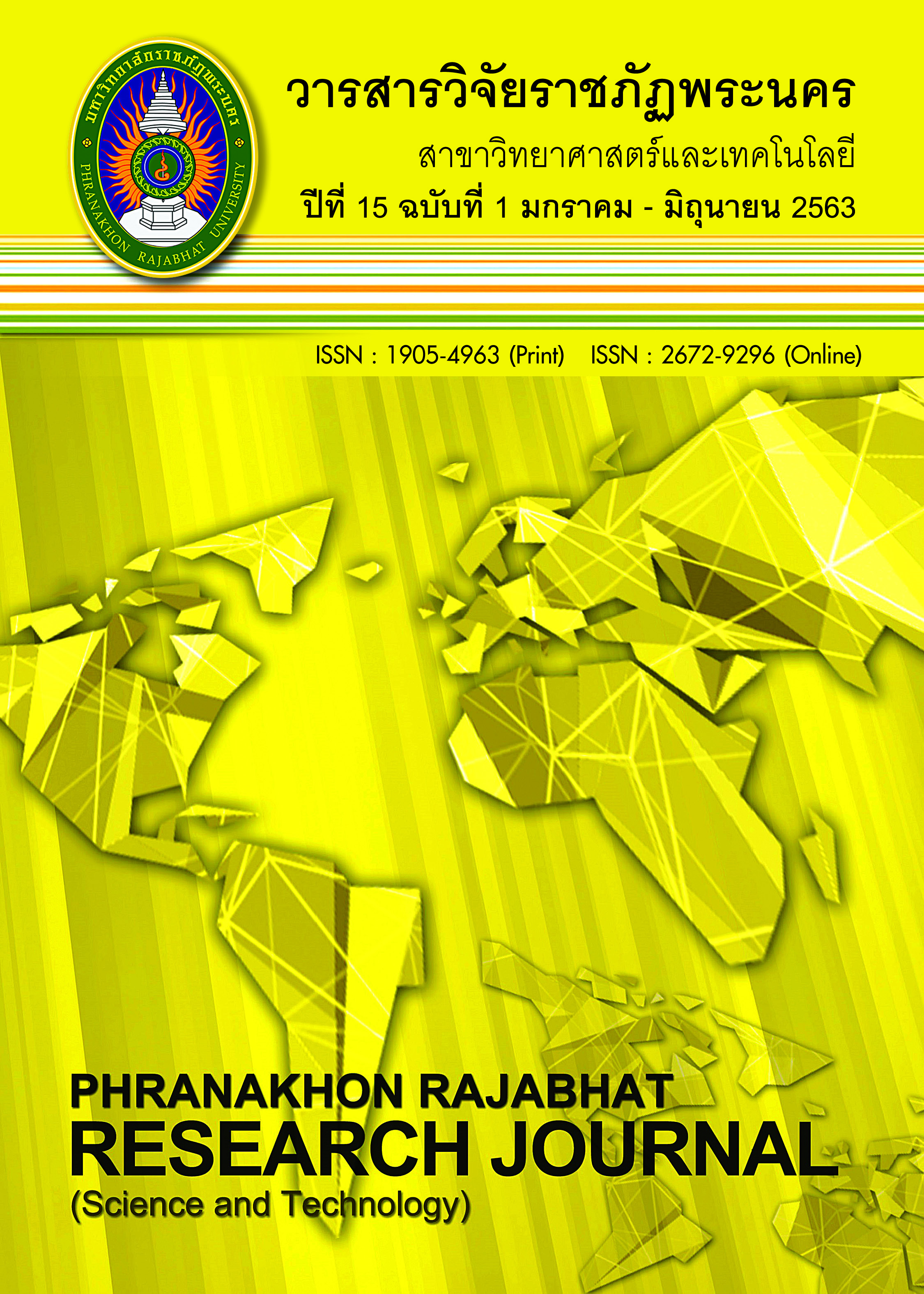Health Risk Assessment of Arsenic and Cadmium Exposure from Traditional Medicine Consumption
Keywords:
Arsenic, Cadmium, Traditional medicine, Health risk assessmentAbstract
Traditional medicine is an alternative for treating diseases. However, consumption of contaminated medicines can cause health effects. This research aimed to analyze the amount of arsenic and cadmium in traditional medicines and to assess health risks from the consumption. The study was conducted in 10 samples for each type of packaged traditional medicine, including Yahom, turmeric, and Andrographis paniculata (Burm.f.) Nees analyzed by using ICP-OES (Inductively Couple Plasma-Optical Emission Spectrometer). In addition, consumption information was obtained by questionnaires from 288 volunteers living in Talat Sub-district, Mueang District, Surat Thani Province. The results show the highest levels of arsenic in Yahom followed by turmeric, and Andrographis paniculata (Burm.f.) Nees, respectively. On the other hand, the levels of cadmium in the 3 types of traditional medicine were not significantly different. Nevertheless, the mean levels of arsenic and cadmium in the 3 types of medicine did not exceed the national standard for herbal products of 4 and 0.3 mg/kg, respectively. Besides, health risks from exposure to arsenic and turmeric in 48% and 1.9% of peoples who consumed Yahom and turmeric, respectively, and 60.0% and 45.5% of peoples who consumed Yahom-turmeric and Yahom-Andrographis paniculata (Burm.f.) Nees were greater than the acceptable level (Health index; HI > 1). Based on the results of this study, even though the amount of arsenic and cadmium did not exceed the standard values, different consumption behaviors in each individual may result in increased health risk.
References
Annan, K., Dickson, R. A., Amponsah, I. K., & Nooni, I. K. (2013). The heavy metal contents of some selected medicinal plants sampled from different geographical locations. Pharmacognosy research, 5(2), 103-108.
Antoine, J.M.R., Fung, L.A.H. & Grant, C.N. (2017). Assessment of the potential health risks associated with the aluminium, arsenic, cadmium and lead content in selected fruitsand vegetables growninJamaica. Toxicology reports,4,181-187.
Agency for Toxic Substance and Disease Registry (ATSDR). (2007). Toxicologicalprofile for Arsenic. Atlanta, GA: Agency for Toxic. Substances and Disease Registry, U.S. Departmentof Healthand Human Services, Public Health Service.
Agency for Toxic Substance and Disease Registry (ATSDR). (2012). Toxicological Profile for Cadmium. Atlanta, GA: AgencyforToxic. Substancesand Disease Registry, U.S. Department of Health and Human Services, Public Health Service.
Buachoon, N. & Sunthornsart, P. (2015). Determinationofheavy metalsand contamination of microorganismintraditional drugs. VRU Research and Development Journal Science and Technology. 1, 79-96.
(in Thai)
Chaiwat, C.,Jamtaweekul,J., Wongpentak S. & Inthongkaew, P. (2014). Safetyofherbal medicines in the National List of Essential Medicines. Journal of Department of Medical Sciences. 3, 123-134. (in Thai)
Chokethaworn, N. & Suttajit, M. (2002). Hazard and toxicity of arsenic. In: Hazard and toxicity of arsenic. Toxicology information center. Retrieved May 4, 2019, from http://webdb.dmsc.moph.go.th/ifc_toxic/a_tx_2_001c.asp?info_id=121. (in Thai)
Department of the Interior. (2017). Registration statistics system. Retrieved September
, 2017, from http://stat.dopa.go.th/stat/statnew/upstat_age.php.
Medicine Act. (1967). Notice of the Food and Drug Administration regarding the
criteria for the registration of traditional drug formulations regarding
microbial contamination standards and heavy metals. Royal Thai Government
Gazette. 121, 43D. (in Thai)
Priprem, A., Sripanidkulchai, B., Julatus, J. & Chitropas, P. (2006). Heavy metals insome
Thai traditional drugs and herbal extracts. Isan Journal of Pharmaceutical
Sciences. 2(1), 43-52. (in Thai)
Sarma, H., Deka, S., Deka, H. & Saikia, R.R. (2012). Accumulation of heavy metals in
selected medicinal plants. Reviews of Environmental Contamination and
Toxicology. 214, 63-86.
Sripanidkulchai, B., Fangkratok, N., Junlatat, J. & Sripanidkulcha, K. (2007). Contamination
of pathogenic microbials and heavy metals in Thai traditional medicines
produced in five amphurs of Khon Kaen province. KKU Research Journal. 12(4),
-507. (in Thai)
United State Environmental Protection Agency (USEPA). (1989). Risk assessment:
guidance for superfund. Volume I Human Health Evalution Manual (Part A),
Interim Final: Office of Emergency and Remedial Response, U.S. Environmental
Protection Agency.
United State Environmental Protection Agency (USEPA). (1991). Integrated Risk Information
System (IRIS): Arsenic, inorganic CASRN 7440-38-2. Retrieved May 4, 2019,
from https://cfpub.epa.gov/ncea/iris/iris_documents/documents/subst/0278_
summary.pdf#nameddest=canceroral.
United State Environmental Protection Agency (USEPA). (2017). Water Quality Standards
Handbook. 2nd Edition. EPA‐823‐B‐94‐005, updated June 2007. Retrieved May
, 2019, from http://water.epa.gov/scitech/swguidance/waterquality/standards/
handbook/.
World Health Organization (WHO). ( 2007) . WHO guidelines for assessing quality of herbal
medicines with reference to contaminants and residues. Retrieved May 4, 2019,
Downloads
Published
Issue
Section
License
โปรดกรอกเอกสารและลงนาม "หนังสือรับรองให้ตีพิมพ์บทความในวารสารวิจัยมหาวิทยาลัยราชภัฏพระนคร สาขาวิทยาศาสตร์และเทคโนโลยี" ก่อนการตีพิมพ์




